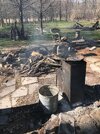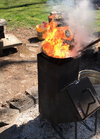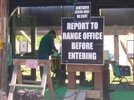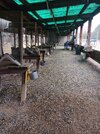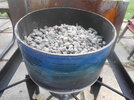P Flados
Member
When collecting or processing range scrap, I have seen plenty of obvious powdery lead oxide (the white stuff) on the surface of older bullets. The "not shiny" dark grey surfaces are also a lead oxide. The dark grey stuff is more firmly attached to the surface, but I am sure some of it gets rubbed off in handling. The scrap that I pick up also has a good bit of dirt mixed in. As the dirt comes from a long established backstop, I am sure there are lead compounds mixed in the the dirt.
Lead oxides and other lead compounds are generally more of a health hazard for ingestion than metallic lead.
As I gather (I scoop and sift) and handle dry range scrap there is a good bit of dust that becomes airborne.
One method to reduce dust exposure is to process the scrap in a wet form to the extent practical. Working wet eliminates dust. Most if the time I work wet as an initial cleaning step to get rid of as much dirt as possible. However, since I let the scrap dry again before the smelting step, I do see dust coming off the dry scrap as I am putting it into the smelting pot.
And then there is the dross and jacket removal. Range scrap smelting requires scooping off a lot of dross and bullet jackets. This step does produce airborne dust.
It seem obvious to me that those of us that process "dirty lead" should be aware of the dust issues and should take appropriate care to minimize our health risks at each step of the process.
Lead oxides and other lead compounds are generally more of a health hazard for ingestion than metallic lead.
As I gather (I scoop and sift) and handle dry range scrap there is a good bit of dust that becomes airborne.
One method to reduce dust exposure is to process the scrap in a wet form to the extent practical. Working wet eliminates dust. Most if the time I work wet as an initial cleaning step to get rid of as much dirt as possible. However, since I let the scrap dry again before the smelting step, I do see dust coming off the dry scrap as I am putting it into the smelting pot.
And then there is the dross and jacket removal. Range scrap smelting requires scooping off a lot of dross and bullet jackets. This step does produce airborne dust.
It seem obvious to me that those of us that process "dirty lead" should be aware of the dust issues and should take appropriate care to minimize our health risks at each step of the process.
Last edited:


